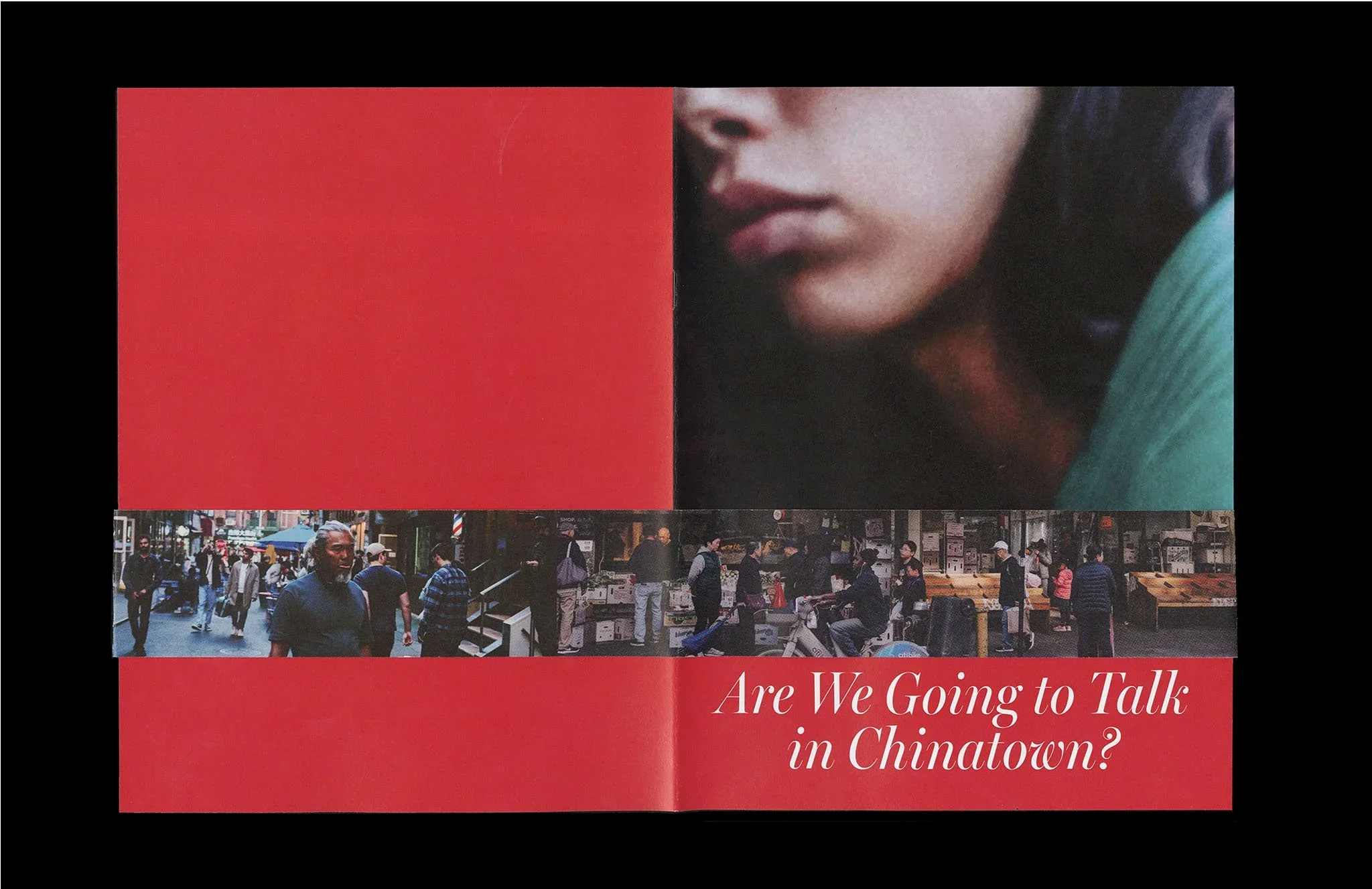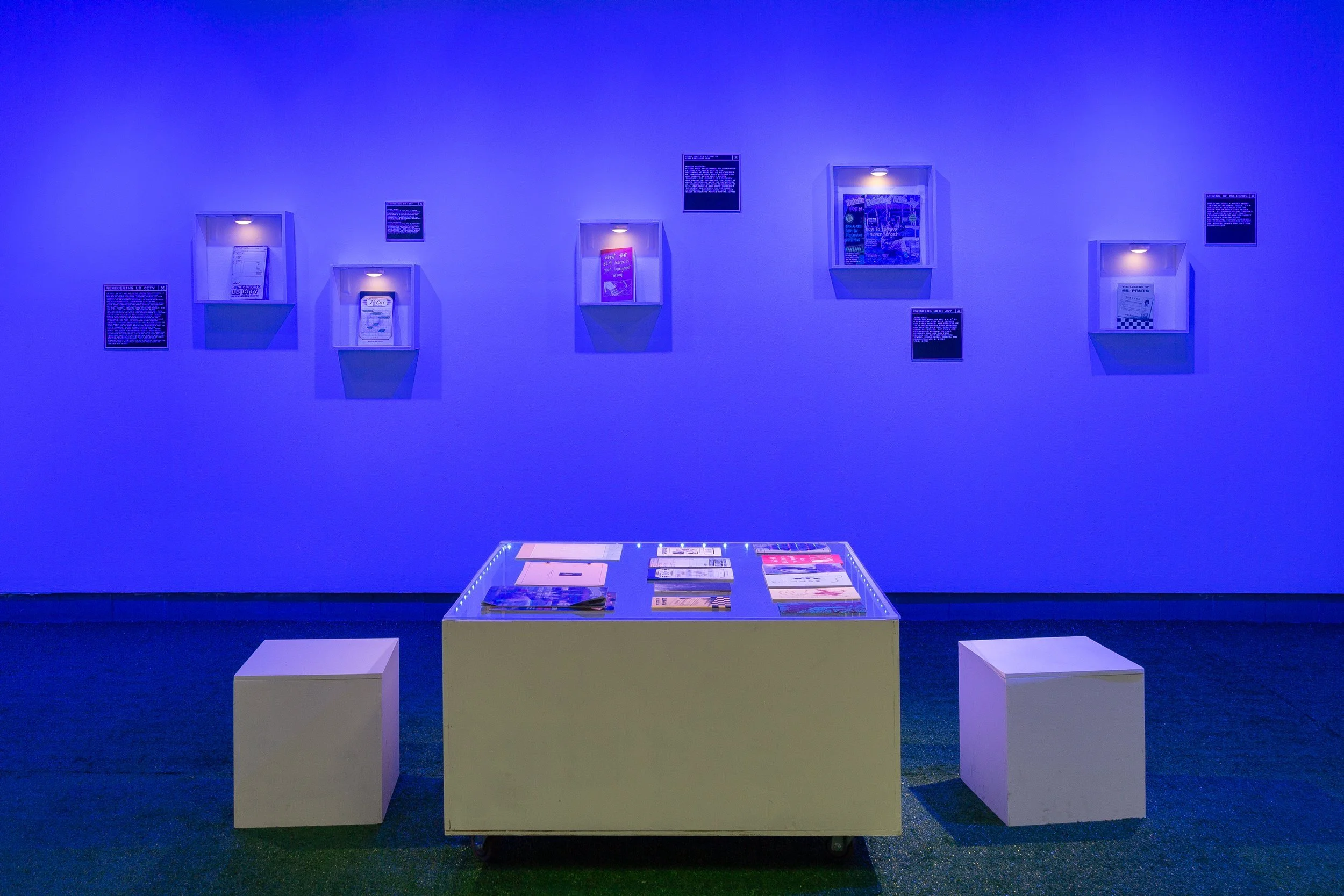10 Questions with Yichan Wang
Yichan Wang is a visual designer based in New York City. She enjoys translating complex ideas into captivating stories. With a career spanning brand, web, and motion design, she crafts compelling experiences that leave a lasting impression.
Yichan Wang - Portrait
INTERVIEW
Please tell us a bit about yourself. What is your personal background, and how does it influence your work?
When I think of my childhood, I see my younger self tucking herself away in a corner of a room, devouring her book. Growing up in Beijing, China, I had a pretty relaxed childhood. It was not uncommon to prescribe children a schedule full of extracurricular lessons, but my parents let me direct my time to my own interests. So I spent a lot of my time reading.
Stories and the beauty in their expressions had a powerful grip on me. The written words were my sensory organs, through which I experienced the world and made sense of my own existence. Literature has shaped my sensibilities, tastes and aspirations. Ever since then, I have wanted to do nothing more than to create such works for others, to tell stories that cast spells.
As I grew older, my interest in stories expanded to broad interests in humanities and art. I was no longer satisfied with fiction; I desired to engage with the reality that underlies powerful stories. For a while, I wanted to study sociology or psychology to engage with people's experiences through social science. For that reason, I came to the States for college in 2014, and I ended up studying art instead. Today, in every aspect of my work, I see the literary influence, from my inspirations to subject matters to creative processes.
Results, Motion Design, 2021 © Yichan Wang
What about your studies? What was your path to becoming an artist like?
I took my first drawing class in college in 2014. It was out of simple curiosity, but I fell in love with it. Visual art was an intuitive way for me to engage with people and reach for the truth of experiences. I realized I wanted to do it all the time, and I decided to study fine arts.
In college, I was trained in drawing and sculpture. My favorite projects were always ones that told stories, often influenced by theater. I was very involved in student theater at the time, and because of my artistic skill sets, my practice naturally extended into set design and graphic design. That was how I took up design as a vehicle to pursue storytelling.
In 2019, I designed projections and promotional materials for the production Heroes Take Their Stands by the Silkroad Ensemble. Working with other video artists on the project, I became curious about emerging technologies that I saw utilized in their works. I had a lot of experience working in traditional mediums, but I wanted to expand my capabilities in new media. So, I pursued an MFA in Design and Technology, taking the opportunity to explore a range of mediums, blending digital design, interaction design, and animation into my practice. Today, my visual design work involves branding, web, and motion design. In my spare time, I make graphic novels and sketch scenes in NYC.
You are primarily a designer. Why did you choose design as your preferred medium? What does it represent for you?
I am fascinated with complexity. When I work with a complex story, design is a medium that lends my creative process a level of clarity. My design process begins with investigating the conceptual objectives of a project. Once I have sufficient understanding, I am able to immerse myself in the nuances of a story and let ideas emerge without worrying about getting too lost. When presenting the stories, I find my work is as much about bringing clarity to information as it is about preserving rich subtleties in the presentation.
I also see the design process as an opportunity to engage with other people's experiences. My design projects are rarely solo initiatives; usually, I engage with someone else's needs and problems. For me, design gives me another way to fully exercise my creativity by adopting others' perspectives, which is something I cherish and really enjoy.
Results, Motion Design, 2021 © Yichan Wang
Results, Motion Design, 2021 © Yichan Wang
You are currently working for a branding agency in New York. What did you learn from this position that you can apply to your own career?
I have grown in every aspect of my skills during my time at the agency, as I lead a variety of projects in branding, web, and motion. But the most important lessons were what I had not trained on in school: negotiating with clients, scoping a project realistically, pitching and self-advertising to potential clients, mentoring junior designers, working in a management capacity, and cross-functional communication. These skills are instrumental to running a design studio, and I am building my work towards that future.
Tell us more about your work. What is your creative process like?
My creative process invariably begins with research. When I sense the potential of a story, I resist immediately telling it. That resistance is not achieved by stubbornly turning my head away. I do it by taking a step back and examining the topic abstractly before embarking on my research. This phase involves delving into related discourses, examining artistic precedents, discussing with collaborators, and gathering visual references. Simultaneously, I compile raw materials for the story, which at first may seem unrelated.
As I identify ideas that relate these disparate pieces into a narrative, the story begins to reveal itself, like how Michaelangelo describes a sculpture being already complete within a marble block. This methodology is integral to both my professional and personal projects. By applying a research-oriented approach, I bring conceptual insights into even the most straightforward, bounded design tasks. In my professional work, I rarely follow a strictly linear refinement process. Instead, it's about remaining on the lookout for the brand story that best fits a client's needs, ensuring the design aligns closely with their narrative.
The Wanderer, Motion Design, 2021 © Yichan Wang
How do you choose the subjects to work with? And where do you get your inspiration from?
I am most inspired by the creative and talented people in my circles. Making art has been how I form deep connections with many of my friends. Their stories, their processes, and their perspectives continually fuel my creativity. For instance, in 2020, my friend Daniel Young wrote a song called "Results". When we discussed the piece, we delved into the connection between the microscopic and macroscopic, from cells to planets, and how these extremities shape a modern vision of the world. This conversation led me to collaborate with him on the animated music video "Results" (2021), visually exploring this concept of scaling and perspective.
In recent years, I have also found myself drawn to the narratives that emerge when people interact with places. My work often begins with an intrigue about how places embody stories deeply significant to individuals. A project I have been working on lately is designing memory palaces in a 3D VR environment, trying to arrange and present personal knowledge as an inhabited architectural space.
In your statement, you define your work as "translating complex ideas into captivating experiences." How do you practically do that? And what do you aim to communicate?
In a scoped project, I find a storytelling perspective helpful for navigating complexity. For instance, when I discuss brand strategy with clients, clients might start out wanting their brand values or personality to be all-encompassing. But in design, if everything is important, then nothing is. Storytelling helps people understand focus and priority because we have all heard good stories and intuitively know a good story when presented with one. When I grasp the real priorities in a client's story, then I can dive into the richness of specificities, transforming abstract concepts into visual experiences that resonate on a visceral level.
In personal projects, this process can be long winding. An ongoing project of mine has been a graphic novel about my friend's ancestral home. The past year has been dedicated to this endeavor, with a significant portion spent on gathering material. I only began writing and illustrating the novel after months of preparation and research. This accumulation of raw mass was crucial to the project, even though it is long and sometimes feels slow in visible progress. Easy stories follow a straightforward, singular narrative, trimming away complexities. But true discovery involves piecing together fragments that don't necessarily align neatly. My artistic role is to present the nuances, what slips through the cracks between one word and the next.
EdTutor, Branding and Web Design, 2023 © Yichan Wang
EdTutor, Branding and Web Design, 2023 © Yichan Wang
On a general level, what do you see as the strengths of your work? And how do you see it evolving over the next few years?
I engage with stories in a way that preserves tension. The term storytelling is often used to describe a process of simplification and dramatization, a masterful manipulation that aims to entertain the audience. Or it is often about assigning a value, as the common saying summarizes, "The moral of the story is…" I do not see the point of my storytelling as entertainment or propaganda. It's about uncovering complexity and communicating nuance in subject matters that people otherwise may not have patience for. I think the strength of my work is that I direct attention to unique subtleties and nuances in stories.
In the next few years, I want my work to be more engaged in new mediums. We frequently use "revolutionary" to describe emerging technology, implying a vision of new experiences overthrowing familiar ones. But I think what actually happens is that we still experience everything on a continuum, the old coexisting with the new and providing context for them. So, in my work, I want to leverage new mediums to tell stories that are grounded in context and enriched by histories.
As we begin a new year, what do you hope to accomplish in 2024, both in terms of career goals and personal life?
I have a few projects going on right now, and naturally, I want to get them to the milestones that I envisioned for them at the start of the year. Because I've been busy, my personal life goal is to make time for doing casual, fun art, like live sketching with friends in a park. I would also like to practice skateboarding more if NYC finally stops raining on weekends.
Finally, what are you working on right now? Is there anything exciting you would like to tell our readers?
I've been working on a VR app in which one can visualize knowledge architecture, draw connections among information, and share such curated content in an immersive environment. The proof of concept is scheduled to be released by this summer, and I'm very excited to share this vision.
Artist’s Talk
Al-Tiba9 Interviews is a promotional platform for artists to articulate their vision and engage them with our diverse readership through a published art dialogue. The artists are interviewed by Mohamed Benhadj, the founder & curator of Al-Tiba9, to highlight their artistic careers and introduce them to the international contemporary art scene across our vast network of museums, galleries, art professionals, art dealers, collectors, and art lovers across the globe.





















